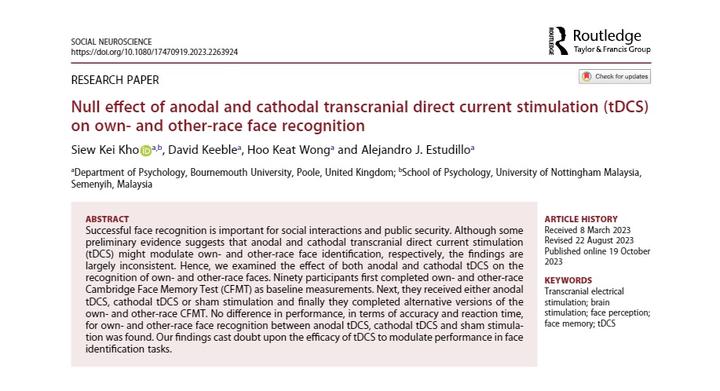Null effect of anodal and cathodal transcranial direct current stimulation (tDCS) on own- and other-race face recognition

Abstract
Successful face recognition is important for social interactions and public security. Although some preliminary evidence suggests that anodal and cathodal transcranial direct current stimulation (tDCS) might modulate own- and other-race face identification, respectively, the findings are largely inconsistent. Hence, we examined the effect of both anodal and cathodal tDCS on the recognition of own- and other-race faces. Ninety participants first completed own- and other-race Cambridge Face Memory Test (CFMT) as baseline measurements. Next, they received either anodal tDCS, cathodal tDCS or sham stimulation and finally they completed alternative versions of the own- and other-race CFMT. No difference in performance, in terms of accuracy and reaction time, for own- and other-race face recognition between anodal tDCS, cathodal tDCS and sham stimulation was found. Our findings cast doubt upon the efficacy of tDCS to modulate performance in face identification tasks.